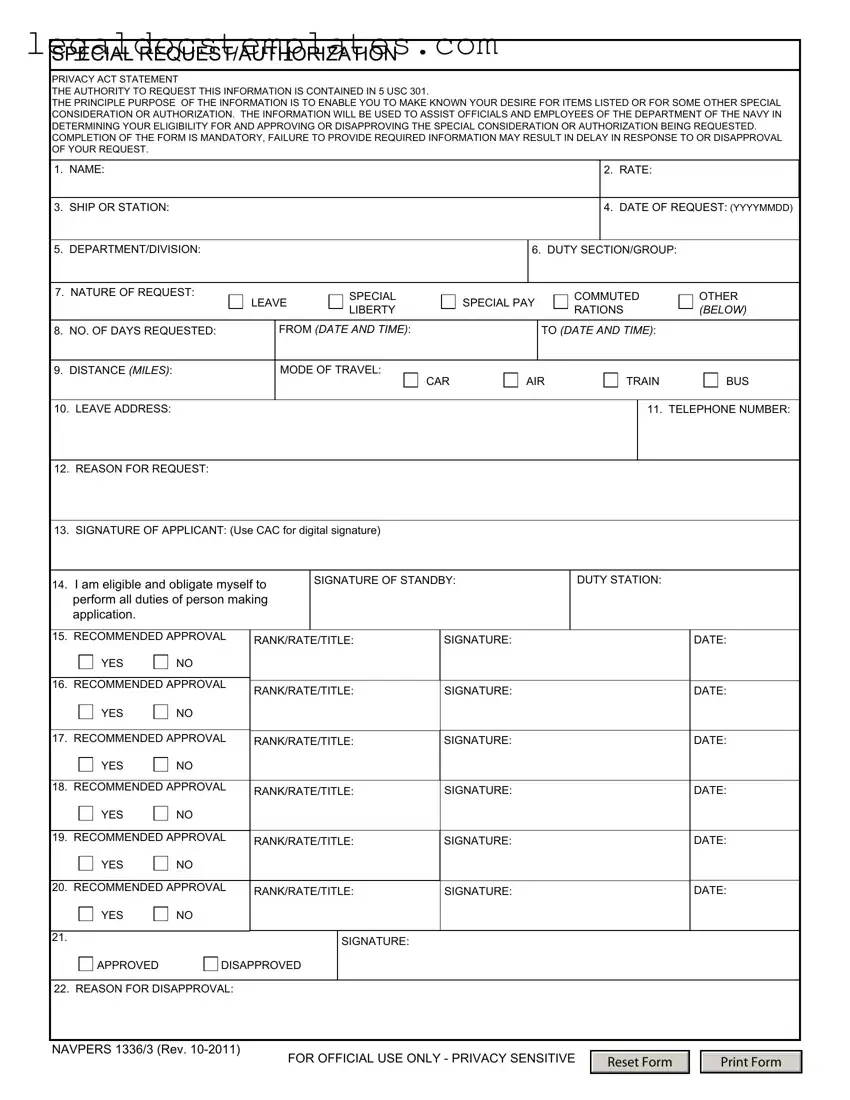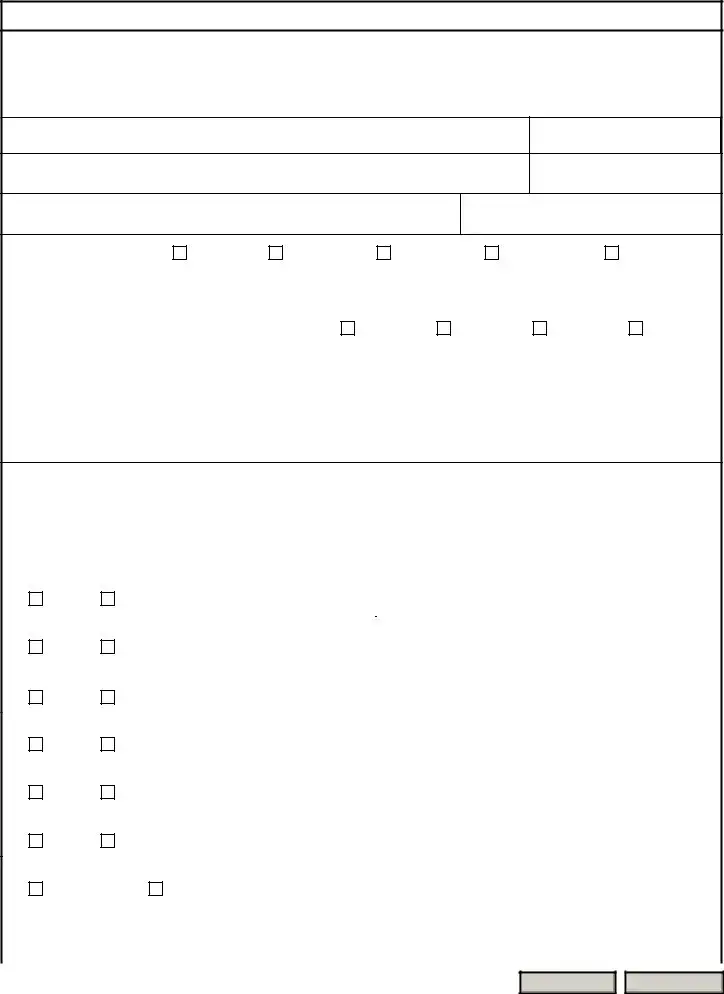The DA Form 31, commonly used in the U.S. Army for requesting leave, is similar to the NAVPERS 1336/3 form in several ways. Both forms are designed for military personnel to request various types of leave or special authorization. They collect detailed personal information, including the period of leave requested and the reason for the leave, ensuring that the military can accurately track where personnel are during their absence. The structured approval process reflected in both documents ensures that leave is granted appropriately and in accordance with military needs and regulations.
Another similar document is the Air Force Form 988, Leave Request/Authorization. Like the NAVPERS 1336/3, it is tailored for Air Force personnel to apply for leave, capturing essential details such as duration of leave, leave type, and leave address. Both documents are crucial in managing personnel availability and ensuring that the chain of command is aware of members' whereabouts for operational readiness, thereby standardizing the leave request process across different branches of the military.
The Liberty Risk Form, used by various Navy commands, parallels the NAVPERS 1336/3 form in its focus on personnel management and accountability. While it specifically addresses risk factors associated with liberty, it similarly requires detailed personal information and an approval process. This ensures that decisions are made with consideration of both the individual's well-being and the unit's operational requirements, echoing the NAVPERS 1336/3’s emphasis on structured authorization for special requests.
The Request for Authorization for Rescheduled Training (RST) Form, utilized within the National Guard, shares similarities with the NAVPERS 1336/3 in its purpose and structure. Both forms are used to formally request approval for deviations from standard duty or training schedules. Detailed information including the nature of the request, timing, and justification helps ensure that such requests are thoroughly evaluated and that any granted adjustments do not disrupt organizational efficiency and readiness.
The Personnel Action Form (DA Form 4187) in the Army serves a broad purpose similar to that of the NAVPERS 1336/3, facilitating requests ranging from reassignment to extra rations. Both forms gather key personal and professional details needed to process the request, incorporate a multi-level review and endorsement process, and are essential for record-keeping and managing personnel actions within the military's strict organizational structure.
The Special Pay Request Form, found across various military branches, is reminiscent of the NAVPERS 1336/3 when service members need to request special financial considerations. Although more focused on financial aspects, it shares the foundational requirement of collecting detailed personal information and justification necessary to process the request, emphasizing the military's structured approach to managing both personal and financial aspects of service members' lives.
The Leave and Earnings Statement (LES) is not a request form like the NAVPERS 1336/3, but it is closely related in the ecosystem of military personnel documentation. It provides a detailed account of a service member’s pay, deductions, and leave status, essentially reflecting the outcomes of approved leave requests as documented on forms like the NAVPERS 1336/3. The interplay between these documents ensures that personnel are correctly compensated and that their leave balances are accurately tracked.
The Overseas Clearance Form, essential for military personnel preparing for assignments or travel abroad, bears resemblance to the NAVPERS 1336/3 in its comprehensive approach to gathering personal data, travel details, and the necessity for approvals through the chain of command. Though the focus is different, both forms play vital roles in ensuring that military operations and personnel movements are carefully planned and recorded, adhering to the need for security, accountability, and readiness in all activities.

